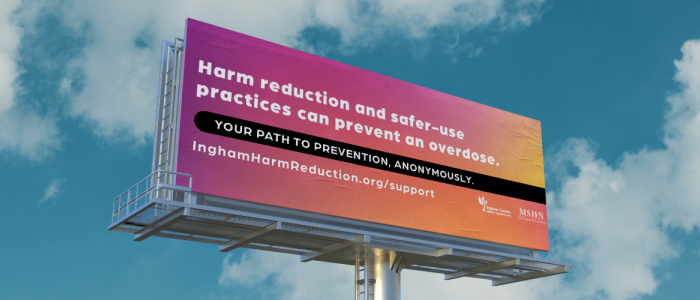
Everything PR pros need to know about influencer relations
May 12, 2023
Category: PR tactics
Services: Digital Media
As a former college content creator and former intern for an influencer marketing agency, I have seen a lot when it comes to influencer marketing. It's undeniable that influencer marketing is a vital component of a well-rounded digital strategy. But there are some questions PR professionals need to ask themselves about influencer relations before diving in.
Most people think about influencers as people who are famous on social media. However, you can use any amount of influence to your client’s advantage. It depends on who you ask, but today most people who earn money creating content on social media prefer to be called creators. Today’s creators are much more diverse than the influencers of the past, with followings starting at just 1,000 people.
Influencer relations can seem like a world of vast unknowns, so let’s start with one thing that PR pros are familiar with: media relations. Media and influencers may seem worlds apart, but influencers are really just new media. For both groups, PR pros need to:
- Make it worth their time. Just like media, influencers only have a limited amount of time to work. And, for many influencers, content creation is not their full-time job, which makes their time even more scarce. Show them why they should spend some of it working on or with your client.
- Tie it to their audience. You wouldn’t pitch a science story to a political reporter, and the same goes for influencers.
- Show them how they can get public attention. For both media and influencers, public attention is currency. Let them know how your proposal will help them become more popular.
- With the media, you want to grab their attention so they will write a story. For influencers, you want to grab their attention so they will consider sending you their rates and then negotiating and creating content.
The process of influencer relations involves a few key steps:
- Research.
- Pitching and negotiation.
- Fulfillment/briefing.
- Publishing.
- Tracking.
Research
The key component of research is using hashtags. Using the search tool on your preferred app, search for hashtags that relate to the target audience of influencers you hope to reach. They can be specific to location (#MichiganCreator), age (#CollegeCreator), content niche (#foodie), following size (#DiscoverUnder5k), and more. Another important note is that creators use “creator,” “influencer” and “blogger” as synonyms in hashtags. So, using the location-specific example, you should search #MichiganCreator, #MichiganInfluencer, and #MichiganBlogger to see which has the kind of creators you’re looking for.
As you’re doing research, be sure to go through the comments of creators you find to see who’s engaging with them. This can show you how authentic their engagement is and help you find creators who may be similar.
To organize your findings, use a simple spreadsheet. Make sure to get the emails of creators you want to work with, as many will not see DMs from accounts they’re not familiar with. Most established creators who regularly do partnerships will have their email in their bio or in a link in their bio. On Instagram, if you’re on a desktop and don’t see an email, try pulling up the account on your phone and looking for the “email” button on your profile.
Pitching and negotiation
Once you’ve assembled your ideal list, it’s time to pitch! Customize your pitch to the creator. Maybe mention a post they did that caught your eye or tell them what stands out to you about their profile. Explain what the deliverables are upfront and share the background of the brand.
When most people think of an influencer partnership, they think of a product. However, influencers can be enticed by services and experiences as well. When thinking of how to leverage influencers for your client, think of how you can create a buzzy experience for influencers to attend.
Then, ask for their rates. If a client has a specific budget, it’s fine to be upfront and offer a rate, but this can be tricky. When you offer a specific amount of money, you may offend the creator if they feel they deserve more. However, many creators will politely decline or ask if there is room for negotiation. It’s important to note that, for most creators, the product is not considered payment. Think about it: you wouldn’t consider the materials you use to do your work payment, and neither would an influencer. Products and exposure also don’t pay the bills, no matter how big your brand is.
After you reach an agreement, it’s time to create a contract. The ideal contract will list:
- Scope of work/summary.
- Content requirements:
- What platform? What type? How many? Any specific days to post or within a date range?
- Exclusions: What should not be mentioned in posts?
- Whether the brand reserves the right to edit content.
- Creation of original content.
- FTC disclosure.
- Exclusivity and ownership:
- Who owns the rights and for how long (30 days, 60 days, etc.)?
- Can content be repurposed by the brand?
- Timeline and duration:
- All the deadlines for revisions, submission, etc.
- Compensation:
- Rate.
- When will they be paid?
- How will they be paid?
- Data access for engagement tracking:
- Formatting preferences.
- When they should send metrics.
- Termination information.
Fulfillment/briefing
Next, it’s time for fulfillment and briefing. If you have an actual product or some kind of material the creator needs to complete the work for you, send it out. Either way, you need to send a creative brief that shares guidelines for the content and any content inspiration.
Publishing
As it comes time for influencers to publish their content, be sure to monitor it to ensure they post what you agreed on.
Tracking
To track creators’ engagement on their posts, ask them to share their metrics with you. You can do this if you have a subscription to a platform that will track it for you, or simply have them send you a screenshot after a certain amount of time the post has been live.
There you have it! After all these steps, you will have completed your first influencer campaign.
In my work with influencers, there are two common challenges I’ve encountered. The first has been creators who ghost. Although you would hope creators would complete their side of the agreement, sometimes after you fulfill your side and send over the materials/product/discount code, they decide to take it and run. While this is disheartening as a brand, it’s just a part of the process. One way to combat this and achieve a lower ghosting rate is to work with an agency that has a dedicated network of influencers. Because the creators in these networks want to continue getting partnerships from the agency, they are less likely to jeopardize this by ghosting one of their clients.
The second issue is trying to find niche creators. Whether it’s location, age or content niche, finding specific influencers who fit your criteria can feel challenging. Again, an agency can help with this because they are experts and have experience in the field. If you’re trying to do it on your own, use hashtag research and pay attention to similar or very niche hashtags creators use.
Overall, influencer marketing is a great opportunity for any PR agency and involves a lot of skills that professionals already use every day. If your clients are looking to tap into this new and exciting industry, make sure they understand the basic process and risks. If done correctly, your client can harness the power of creators and boost the work that you’re already doing for them.



